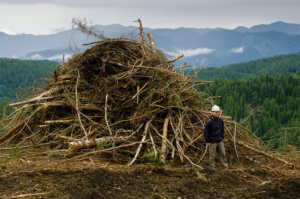How Co-Generation Works
How Co-Generation Works
Cogeneration is an efficient way to generate electricity. The conventional method calls for burning a fossil fuel in an enormous furnace to release heat energy, which is then used to boil water, which makes steam. That steam powers a turbine which drives a generator, and the generator is what actually produces electricity. However, the water used to make steam and drive the turbines must be cooled back down before being released into the atmosphere, which constitutes an enormous waste.
In cogeneration, the big energy savings comes from capturing the hot steam after it drives the turbines. From there, it’s piped to locations where it can be re-used to power turbines. Also called CHP (combined heat and power), cogeneration makes use of the hot water which is normally wasted and supplies it to local businesses and residences as a heat source. When CHP power plants are setup instead of conventional ones, they use different heat engines to produce the steam which drives turbines to be even more efficient, and create the maximum capture of energy.
How forest biomass is used in co-generation
A CHP power plant typically consists of an installation with an integrated power system that has three primary components: a unit which receives biomass and feedstock for preparation, a component for converting biomass into steam power generation, and the component for converting the steam into electrical power.
The materials used as input to the entire process are generally organic residues from forest production, coupled with food and fiber byproducts. These materials can include corn stalks, wheat straw, rice husks, sawdust, forest residue, and mill residues. Feedstock is considered to be those forests and grasses specifically grown for energy production, such as switch grass, hybrid poplars, and hybrid willows. In order to make the whole process to be economically viable, biomass sources must be relatively inexpensive to harvest, transport, and store prior to conversion into electrical energy.
Using forest biomass as a fuel source has great appeal because it makes use of materials that would be wasting away in forests and interfering with new growth. In many cases, one of the biggest expenses that Forest Management organizations incur annually is the removal of such forest biomass, as a means of reducing the number of forest fires, as well as the severity of such fires once they are underway. Putting that biomass to productive use constitutes a double savings – it helps to limit forest clutter and the fires which might result, and it can be used to fuel the generation of electricity.
References




